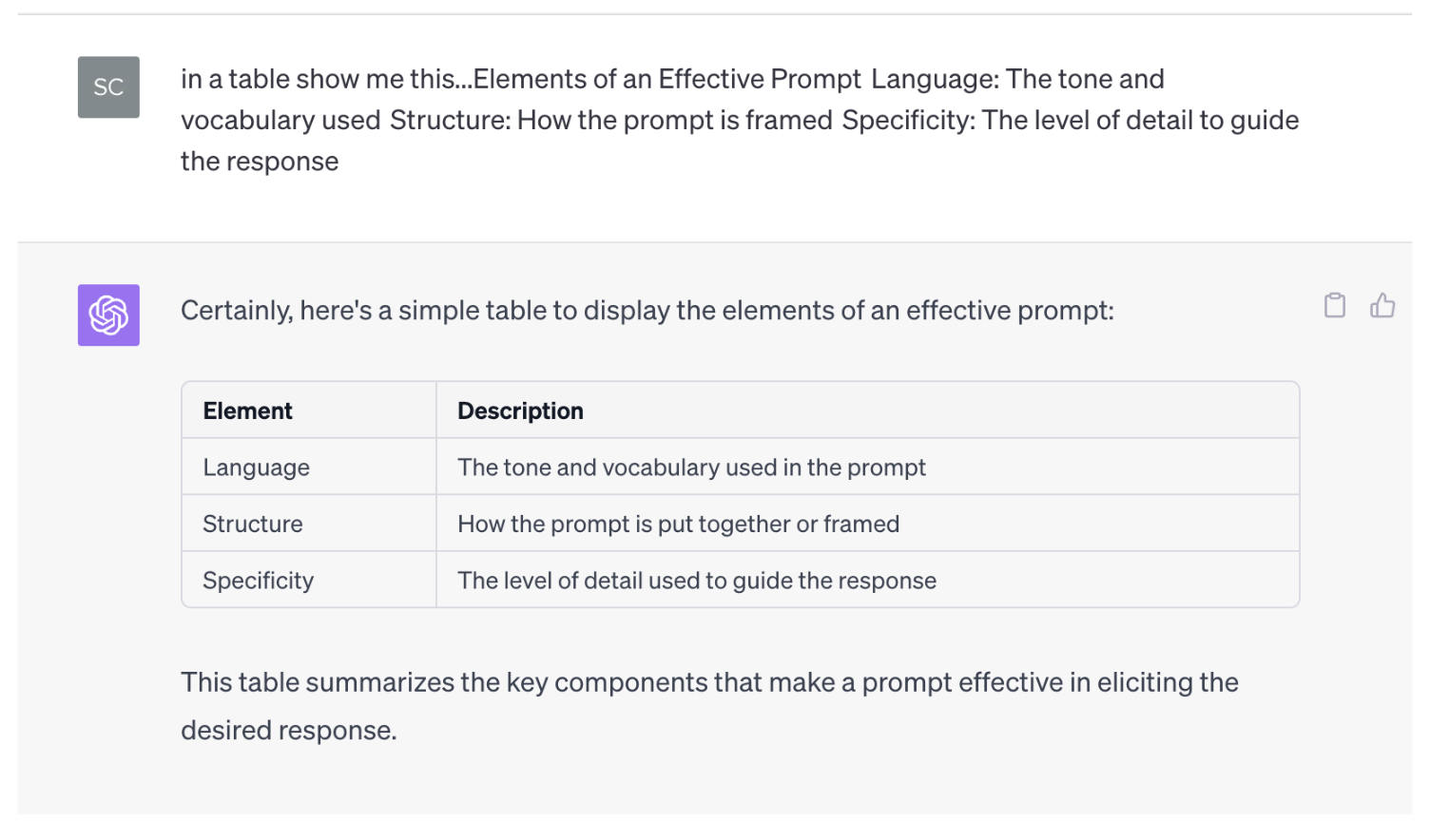How to Write Case Studies with ChatGPT
The advent of AI tools like ChatGPT has revolutionized case study writing. With ChatGPT, you can generate ideas, structure your case, and even get help with research. It’s a fantastic tool for brainstorming and refining your case study, ensuring it’s both informative and engaging.
When using Ai / ChatGPT to craft your cases, it is really important to know how to prompt ChatGPT to get the most of out the AMAZING LLM that it is. ChatGPT can literally create anything in the written word. Knowing how to harness the power of the GPT model is where we need to focus all of our time. Generating ideas, concepts and the story is part of the process but Crafting the Correct Prompt to guide ChatGPT when writing our case is most critical.
Start with a Prompt
When writing cases for class, focus on interesting scenarios that encourage critical thinking. If possible, use real-life examples to make the study more applicable and engaging or create a unique and challenging hypothetical scenario that does that job. In all. the authenticity of the scenario based on a real company has shown to be less impactful as an overall interesting scenario for students to engage with the Case.
So the question is, how do we do this in ChatGPT? Start with these 3 guidelines when creating a prompt for your case:
- Language: The tone and vocabulary used
- Clear prompts facilitate better understanding, helping to generate responses that closely align with what is intended.
- Structure: How the prompt is framed
- The process of refining a prompt is iterative. It involves starting with a basic version, evaluating its effectiveness, and then making changes to improve it. Testing different variations and considering the audience can also aid in crafting a more effective prompt.
- Specificity: The level of detail to guide the response
- Providing context, such as the situation or subject you’re asking about, helps the conversational agent to provide a more focused and relevant response.
Examples
Here are three versions of how you could structure a prompt for ChatGPT, each tailored for different complexity levels in generating a case study using a language model like GPT-4.
Basic Version
Prompt for Basic Case Study Generation in Marketing and Entrepreneurship:
-
- Case Topic: Create a basic case study on the fundamentals of marketing in entrepreneurship.
- Case Type: Opt for a Descriptive Case Study format.
- Target Audience: Aimed at beginner-level students or individuals new to marketing and entrepreneurship.
- Data Requirements: Use basic marketing statistics and simple entrepreneurial examples.
- Structure and Content: The case study should start with a basic problem in marketing, provide background on entrepreneurship, and conclude with a simple analysis. It should be concise, focusing on fundamental concepts without complex details.
- Case Length: Ensure the case study is brief and straightforward, suitable for a quick read and basic understanding.
Intermediate Version
Prompt for Intermediate Case Study Generation in Marketing and Entrepreneurship:
-
- Case Topic: Develop an intermediate-level case study focusing on the application of marketing principles in entrepreneurial ventures.
- Case Type: Use an Explanatory Case Study approach to explore cause-and-effect scenarios.
- Target Audience: Suitable for students with some background in marketing or entrepreneurs looking to deepen their marketing knowledge.
- Data Requirements: Include real-world marketing scenarios, intermediate-level statistics, and case-specific data.
- Structure and Content: Begin with a marketing challenge in an entrepreneurial context, detail the industry background, and analyze the situation with a moderate level of complexity. The study should provoke critical thinking and application of marketing theories.
- Case Length: Design the study to be comprehensive yet engaging, offering a balanced mix of theory and practical examples.
Advanced Version
Prompt for Advanced Case Study Generation in Marketing and Entrepreneurship:
-
- Case Topic: Create an in-depth case study on innovative marketing strategies in the entrepreneurial sector.
- Case Type: Choose an Exploratory Case Study format for a detailed investigation.
- Target Audience: Geared towards advanced students, researchers, or professionals with a solid foundation in marketing and entrepreneurship.
- Data Requirements: Incorporate complex data sets, advanced marketing metrics, and detailed entrepreneurial case histories.
- Structure and Content: The case study should feature a complex marketing issue in entrepreneurship, provide an extensive background analysis, and include multiple perspectives and solutions. It should challenge the reader to explore advanced concepts and their practical implications.
- Case Length: Ensure the case is detailed and comprehensive, covering multiple pages to facilitate deep analysis and discussion.
Each version of the prompt is tailored to cater to different levels of understanding in marketing and entrepreneurship, from basic to advanced, ensuring that the generated case studies are appropriate for the intended audience.
Unsure about how to do this?
No worries! If this is a bit to complicated or seems like too much work. Use our Case Study Prompt Generator. It it takes 3 inputs from you and generates a really advanced and useful prompt that you simply copy and paste into ChatGPT. All of the hard work is done.
Prompts that actually work.
What you will find out is that, it is really hard to get ChatGPT to create a case study the way that you want be default with a prompt. It takes the correct inputs, structure and writing to get a useful case from ChatGPT. Below is an advanced prompt that was generated by our Free Case Study Prompt Generator.
This type of prompt will generate a useful case from the start and is a good example of the detail that is needed to get something useful.
Main Prompt for Case Generation: To use a language model like GPT-4 to create case studies, you need to follow a series of steps that involve understanding the case, defining its scope, preparing the data, and finally generating the case studies. Here is a detailed breakdown of the process: 1. Understand the Case: Firstly, understand what kind of case study you want to generate. This might include the topic fundamentals of marketing, the intended audience, the structure of the case study, and the kinds of information you want it to include. These factors will guide your preparation of the data. >>>>The writing length MUST be detailed, reflective of the content and build upon itself so that the final product is detailed. 1. Generate a Main Theme is Entrepreneurship. 2. The topic is fundamentals of marketing. 3. Type of case: Business Case. Data for establishing kinds of cases Case studies can be used in various fields to analyze and understand different aspects of a particular subject or situation. They can be categorized in different ways based on the purpose they serve, the approach they take, or the structure they follow. Here are a few categories of case studies based on the structure or approach: 1. **Exploratory Case Studies**: These are condensed case studies performed before implementing a large-scale investigation. The primary goal is to help identify questions and select the types of measurement prior to the main investigation. 2. **Descriptive Case Studies**: These involve starting with a descriptive theory. The subjects are then observed and the information gathered is compared to the pre-existing theory. 3. **Explanatory Case Studies**: These are often used to do causal investigations. In other words, researchers use these to study how event A leads to event B. These structural categories allow you to decide on the kind of case studies you will be generating. If you are focusing on AI-generated case studies, you might want to keep the structure more streamlined and simple. Descriptive or illustrative case studies might be best suited for AI generation because of their straightforward structure. >>>>The structure of the case is… When considering your target audience, think about who will be most interested in the topics you are covering in your case studies. This could be businesses looking for insights into specific situations, students learning about particular subjects, or professionals seeking knowledge or understanding of specific phenomena. The type of case studies you decide to produce can definitely affect your target audience. For instance, exploratory case studies might be more useful for academic or research audiences who are planning in-depth investigations. On the other hand, descriptive or illustrative case studies might be more suited for a more general audience looking for a comprehensive understanding of a particular subject. Your answers to these questions will help define the kind of data you need to train your model. 1. Case study scope: The industry can be anything, the focus or subject for the topic is your discretion and the issue is yours to decide; this is a business case. 2. Data Preparation: Once you have a clear understanding of the type of case studies you want to generate, you’ll need to collect and prepare the data to train the model. You might consider the following steps: 3. * Data Formatting: In order for the model to understand your data, you need to format it correctly. This means deciding on a consistent structure for your case studies and making sure all of your data follows this structure. * I need some figures and numbers that can add to the case story; you generate them and make them flow. 4. Generating Case Studies: Once the model is fine-tuned, you can generate case studies. You can do this by providing the model with a prompt and asking it to generate the rest of the text. The prompt might include some details about the case study you want, and the model will generate text based on what it learned during fine-tuning. 5. Generate a university-level Case Study that is detailed and consistent in the theme of Entrepreneurship and the topic is fundamentals of marketing. The writing needs to be complete, straightforward, and not biased towards any one player in the case. The topic is fundamentals of marketing, and have enough detail in the scenario that students have enough time to read the case (3 pages in length) and then take their knowledge and apply that critical thinking to the case questions that we will create after. Here is some information on why people use cases… :::::::Why are case studies used? A case allows (the student) to step figuratively into the position of a particular decision-maker. Cases allow students to put themselves in the place of actual leaders and decision-makers. Students are able to analyze situations, develop alternatives, choose plans of action and implementation, and communicate and defend their findings in small groups and in class. Cases are used to test the understanding of theory, to connect theory with application, and to develop theoretical insight. Cases are one of the best ways to enable students to learn by doing. The Case study needs to follow the Business Case Study Format provided. :::::::Business Case Study Format A typical case study begins with a paragraph describing the problem facing a manager, leader, or executive. The case often gives background information on the industry, the organization, and the stakeholders involved. Much of the background information for a case is in the public domain. The case then typically returns to the dilemma faced by the protagonist. At this point, it is helpful to include comments from company executives. Their perspective, management style, and deliberations bring realism to the case. The case concludes with a recap of the problem addressed at the outset of the case. Depending on the focus of the case, it may include financial statements, organization charts, process flow charts, and other related information.
The Result it Created
Title: Unlocking Success in the Entrepreneurial World: A Fundamentals of Marketing Case Study
Introduction: In the fast-paced realm of entrepreneurship, knowledge and application of fundamental marketing principles are paramount for achieving business success. This university-level case study delves into the world of entrepreneurship, focusing on the fundamentals of marketing. Through a detailed scenario, we aim to provide students with an immersive learning experience, allowing them to apply critical thinking skills to real-world situations. This case study follows the Business Case Study Format and is designed to be three pages in length.
Case Background: Our case study revolves around a dynamic startup company named “InnoVize,” founded by Alex Turner, a visionary entrepreneur with a passion for innovation. InnoVize specializes in creating cutting-edge tech gadgets and has gained significant attention for its groundbreaking products.
Alex Turner started InnoVize in his garage a few years ago, and through sheer determination, he has transformed it into a company with a promising future. However, as the business has grown, so have the challenges. InnoVize is at a critical juncture in its journey, facing a dilemma that requires strategic marketing decisions.
The company has recently developed a new product, a smart wearable device called “VizWear,” which boasts impressive features and capabilities. The VizWear has the potential to revolutionize the market, but it faces stiff competition from well-established tech giants.
The Dilemma: The main predicament Alex Turner faces is how to effectively market the VizWear to a broader audience while competing against industry giants. He realizes that his limited budget and resources pose significant challenges in gaining market share.
Furthermore, Alex is unsure whether to adopt a niche marketing strategy, targeting a specific audience with personalized campaigns, or to pursue a mass marketing approach to reach a wider customer base. Each approach has its advantages and drawbacks.
Key Questions:
- What are the core marketing principles and strategies that Alex Turner should consider for the successful launch of VizWear?
- Should InnoVize pursue a niche marketing strategy or a mass marketing approach for VizWear? What are the pros and cons of each?
- How can InnoVize leverage its limited budget to maximize the impact of its marketing efforts?
- What marketing channels and platforms should InnoVize prioritize to reach its target audience effectively?
- How can InnoVize differentiate itself from the competition and create a strong brand presence for VizWear in the market?
Expert Insights: To shed light on this marketing conundrum, let’s hear from industry experts. Sarah Johnson, a renowned marketing strategist, emphasizes the importance of aligning marketing strategies with the product’s unique value proposition. She suggests that a well-defined target audience is crucial, as it allows for more focused and cost-effective marketing efforts.
Michael Ramirez, a seasoned entrepreneur, advocates for a mix of both niche and mass marketing, depending on the product’s stage and objectives. He emphasizes the need for creativity and innovation in marketing campaigns to stand out in a competitive landscape.
Conclusion: As students delve into this case study, they will have the opportunity to analyze a real-world business scenario and apply fundamental marketing concepts to solve practical challenges. Entrepreneurship is about making informed decisions in the face of uncertainty, and this case study provides the platform for students to develop their analytical and decision-making skills in the context of marketing.
InnoVize’s journey is a testament to the trials and triumphs of entrepreneurship, and the decisions made in this pivotal moment will shape the company’s future. We encourage students to engage critically with this case, explore various marketing strategies, and propose well-reasoned solutions that can help InnoVize achieve success in the competitive world of tech gadgets.
Wrapping it all up
This case is what we like to call.. a level 1 or first revision case that is not complete but moving in the right direction. Depending on what you need, you can create any length of case study, based on any topic and with anything you want in it.
I am continually aligning my cases more easily with the course learning outcomes, deliverables and specific topics for my courses that I simply do not get with any more cases that are offered of the list I gave above.
In summary, Teaching With Cases serves as a vital compass in the vast sea of educational resources, guiding learners and educators alike towards a haven of knowledge and growth. By harnessing the power of technology and the wealth of available resources, we open doors to new realms of understanding and expertise. As we conclude this enlightening journey, we invite you to continue exploring, learning, and sharing. Remember, each case study you engage with is not just a learning experience; it’s a step towards transforming the way we think, teach, and innovate in our ever-evolving world.
Join us at TeachingWithCases.com, where every resource is a stepping stone to your next breakthrough.


